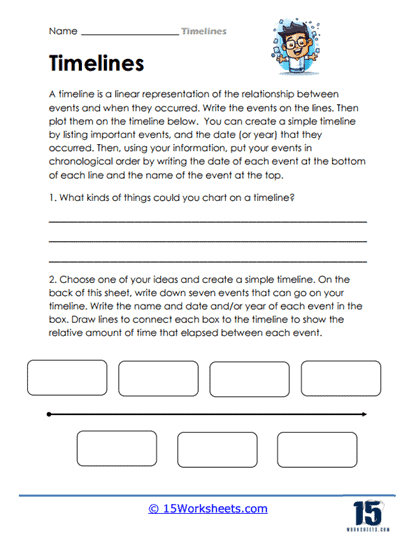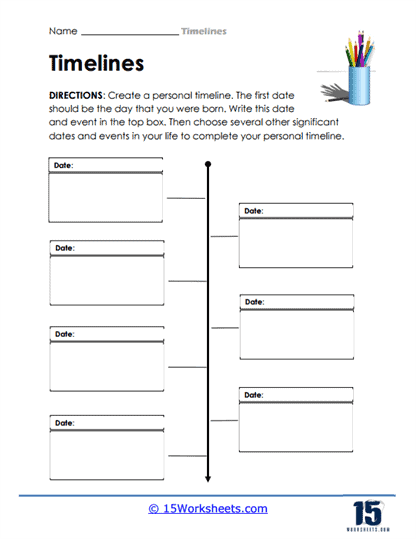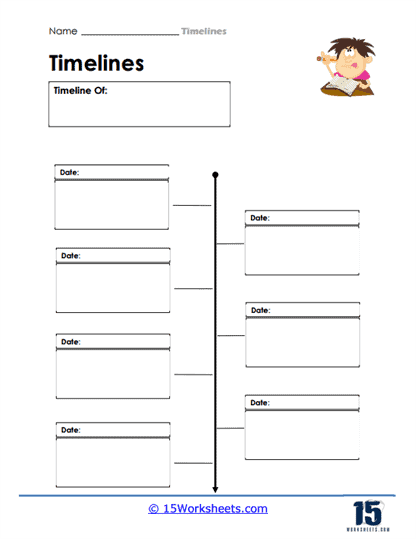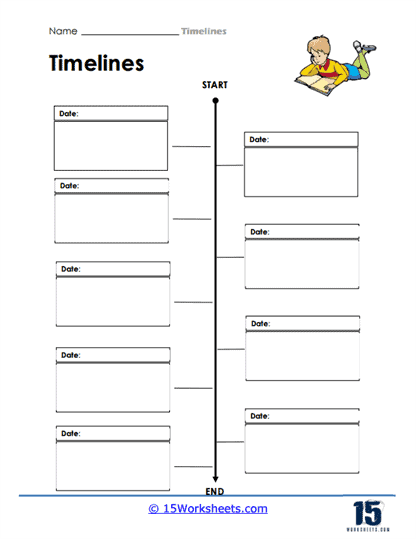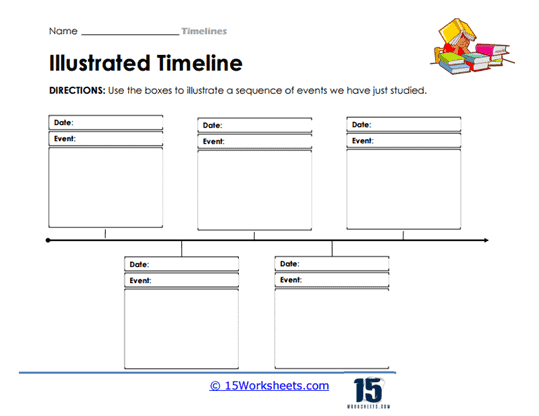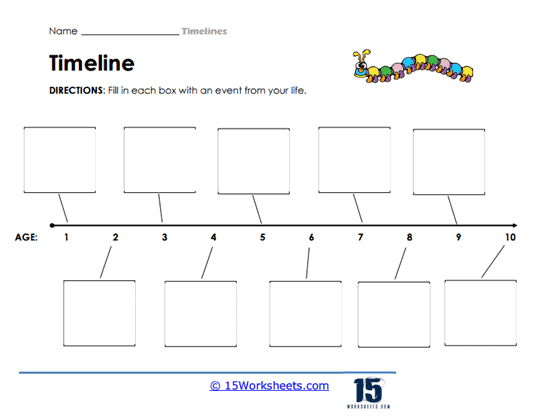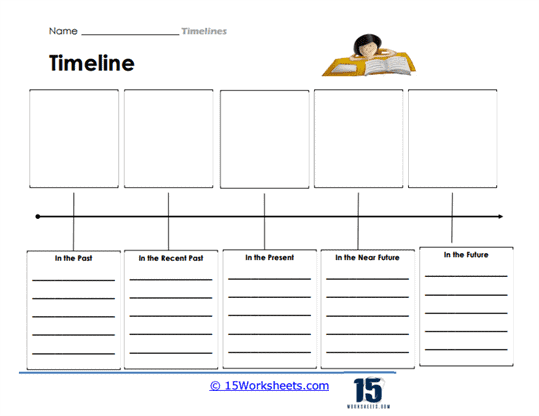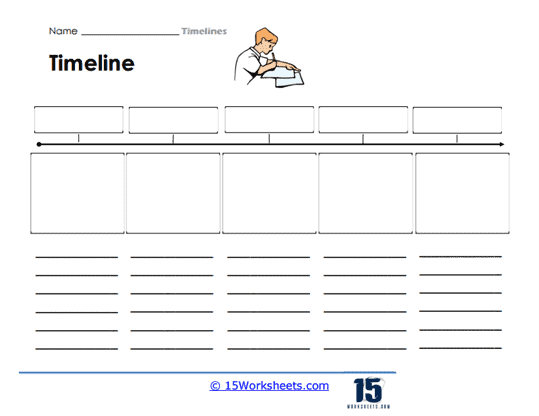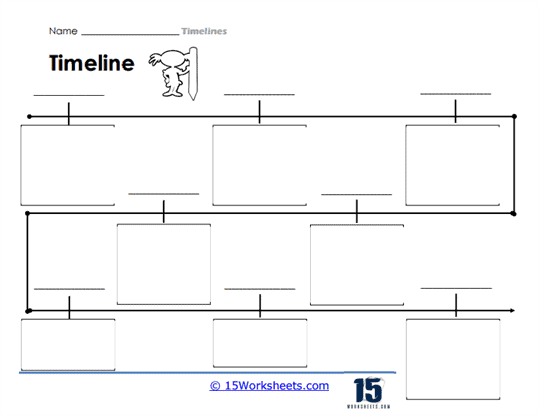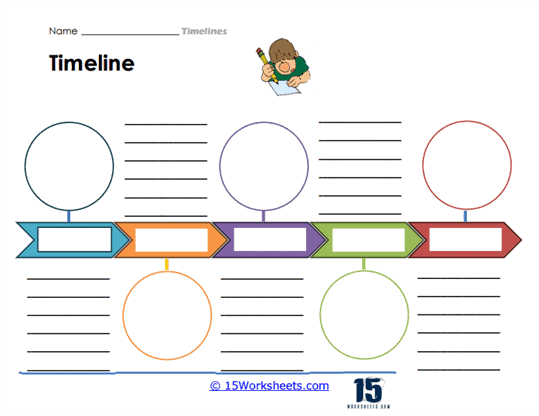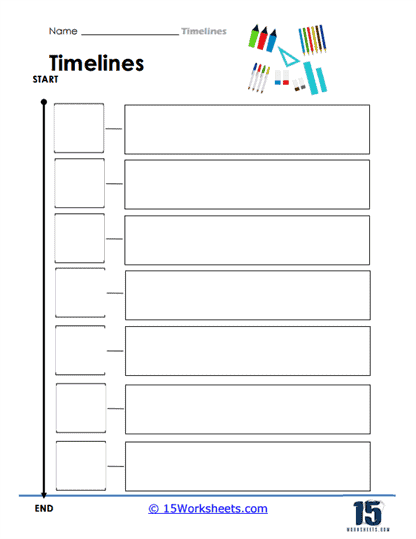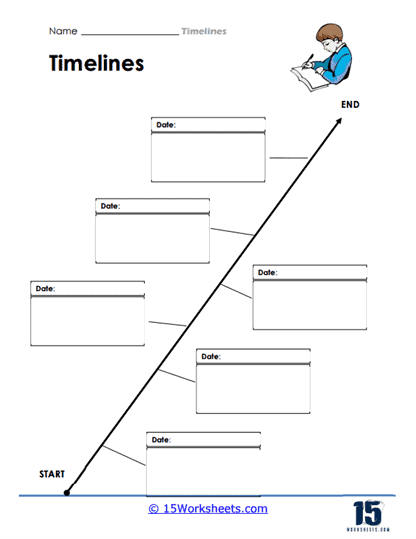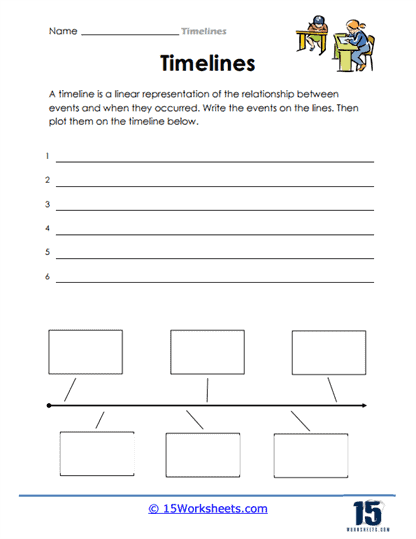Timelines Worksheets
All About These Worksheets
A timeline is a visual representation of events arranged in chronological order. Typically displayed as a line with intervals, it portrays a sequence of occurrences, indicating when each event took place relative to the others. Timelines can represent various durations: the life of an individual, the history of a civilization, the progression of a project, and more. Their primary purpose is to simplify complex sequences, making it easier to understand the nature and order of events.
Timelines, as a tool, serve as bridges across time, linking events in a comprehensible sequence. By transforming abstract durations into visual narratives, they offer clarity, perspective, and insights. Whether charting the course of empires, the progression of a novel, or the milestones in a person.
The Utility of Timelines
Sequential Clarity – By placing events in order, timelines clarify the sequence in which things happened, helping avoid confusion about what came before or after a particular incident.
Historical Perspective – In the context of history, timelines provide a bird’s eye view of events, offering insights into the progression of eras, dynasties, innovations, or revolutions.
Cause and Effect – Timelines can help observers discern patterns, potentially revealing causes and effects. For instance, a financial timeline may show a stock market crash following certain economic policies.
Comparison – Multiple timelines can be juxtaposed to compare and contrast different sequences or parallel events, aiding in understanding correlations or different perspectives.
Milestone Highlighting – Timelines emphasize key events, milestones, or turning points, making it easy to identify the most significant moments in a sequence.
Temporal Compression – They condense prolonged durations into an easily digestible format, enabling a quick grasp of extended sequences.
How to Read a Timeline
Orientation – Begin by understanding the timeline’s orientation. While most are horizontal, some are vertical. The start might be at the left, the top, or even the center in circular or spiral timelines.
Scale – Identify the scale. Does the timeline represent decades, years, months, or days? Uniform timelines have consistent intervals, while logarithmic ones might condense certain periods.
Events – Examine the individual events or milestones. These are usually marked as points or periods along the line, each labeled with a date or time and a brief description.
Visual Aids – Many timelines incorporate visuals like pictures, icons, or color codes to enhance understanding or categorize events.
Linkages – Some timelines connect related events with lines or arrows, indicating cause-effect relationships, correlations, or sequences.
Multiple Strands – Some complex timelines have multiple parallel lines, each representing a different category or perspective. For instance, in a World War II timeline, one strand might track political events, another military battles, and a third societal changes.
Timelines in Various Contexts
Academic and Historical – These trace events across eras, civilizations, or specific periods. For instance, a timeline of the Renaissance might chart significant artworks, discoveries, and philosophical advancements.
Biographical – Focused on an individual’s life, these highlight personal milestones, achievements, or significant moments.
Project Management – Used in business or projects, these timelines (often called Gantt charts) outline project phases, tasks, and their durations, aiding in tracking progress.
Technological – These might trace the evolution of a technology, illustrating advancements, iterations, and innovations over time.
Genealogical – Used in family history research, these timelines track family events, helping genealogists understand family stories and migrations.
The Impact of Digital Technology on Timelines
Digital tools have revolutionized timeline creation and interpretation. Modern software allows for interactive timelines, where users can zoom, scroll, or click on events for detailed information. Multimedia elements, like videos, audio clips, or hyperlinks, can be embedded for richer experiences. Moreover, digital timelines can be easily updated, shared, or integrated into presentations, making them more dynamic than their static counterparts.
Understanding the Nature of Events through Timelines
While timelines present events chronologically, they inherently offer more profound insights:
Temporal Relationships – They show how rapidly events followed one another, revealing periods of rapid change or stagnation.
Concurrent Histories – By juxtaposing events, timelines can show what was happening simultaneously in different places or fields, providing context. For instance, while Europe was undergoing the Renaissance, what was transpiring in the Americas or Asia?
Pivotal Moments – By emphasizing significant events, timelines spotlight moments that changed the course of history, initiated new eras, or marked the culmination of prolonged efforts.
Duration Understanding – By compressing time, timelines provide a sense of how long certain periods, eras, or reigns lasted relative to others.


